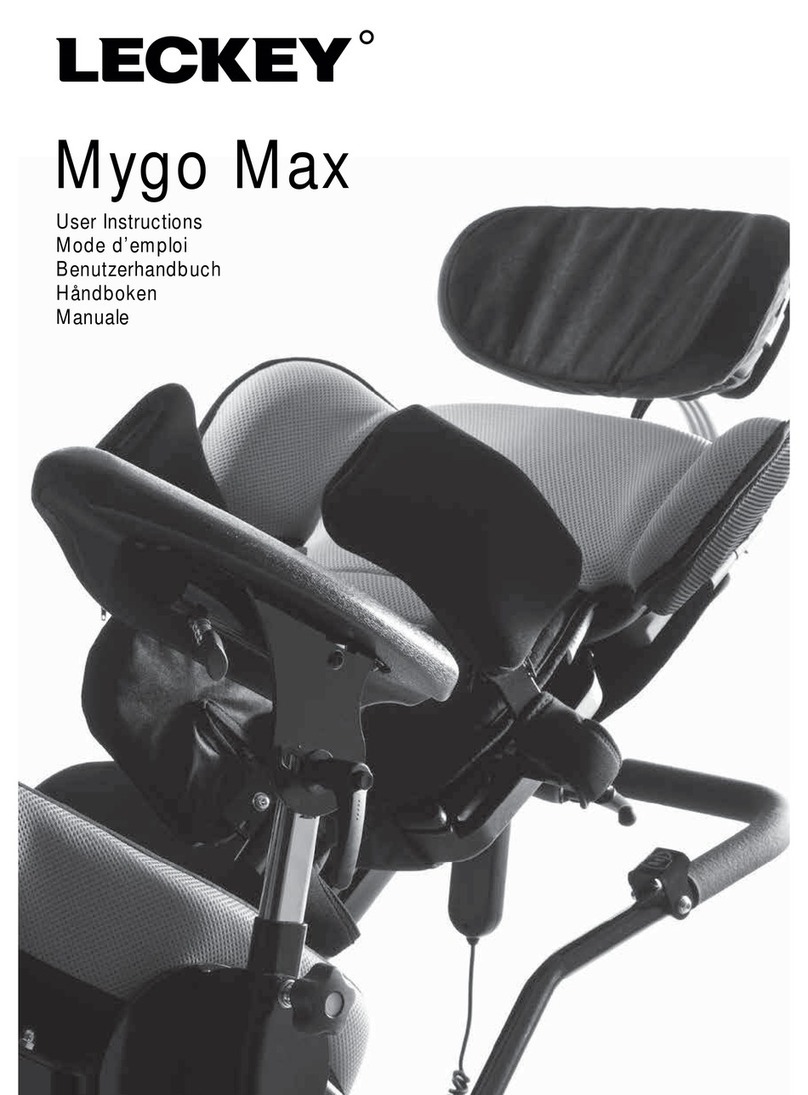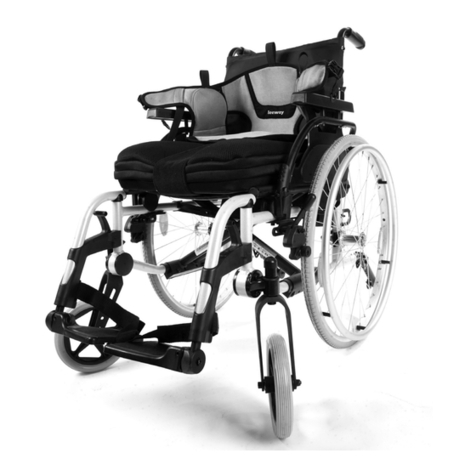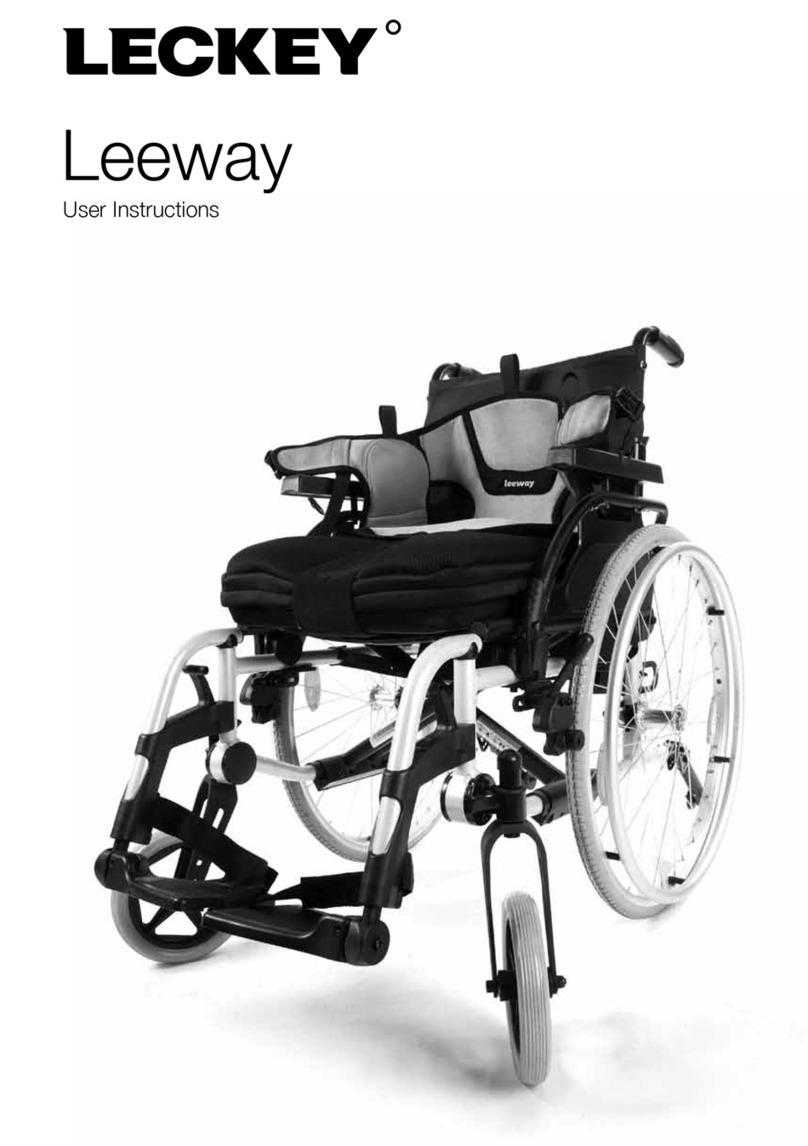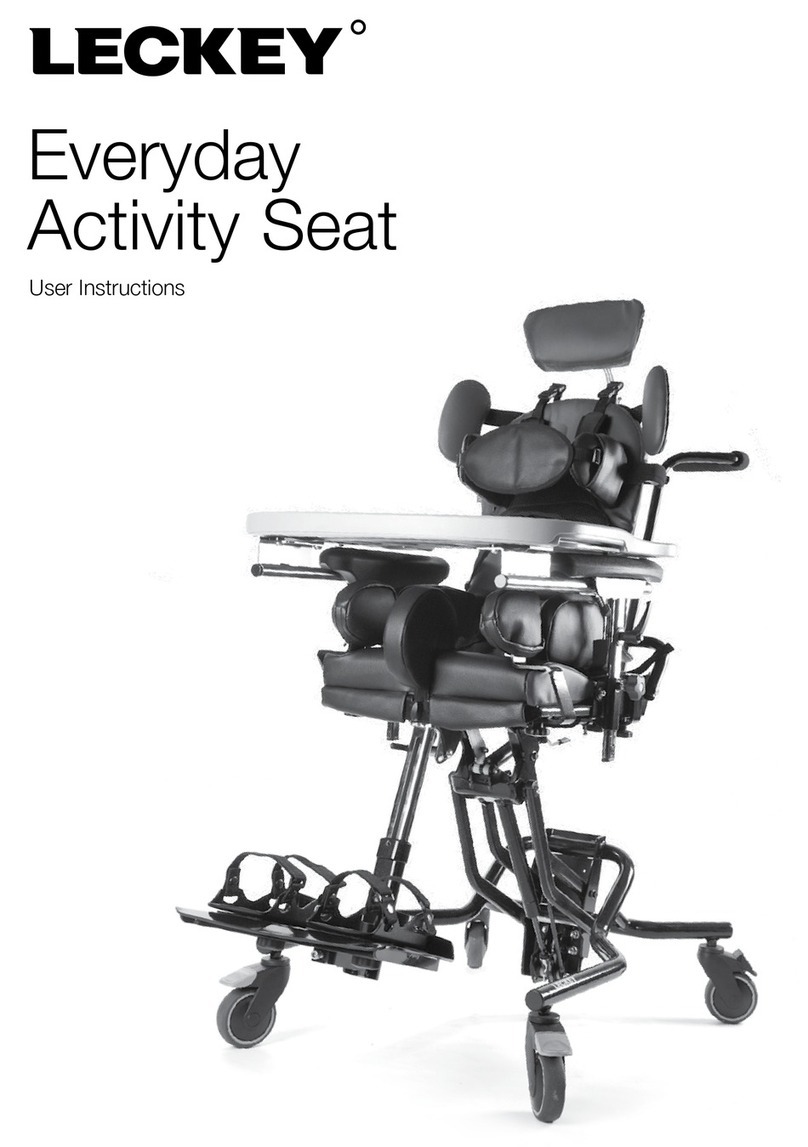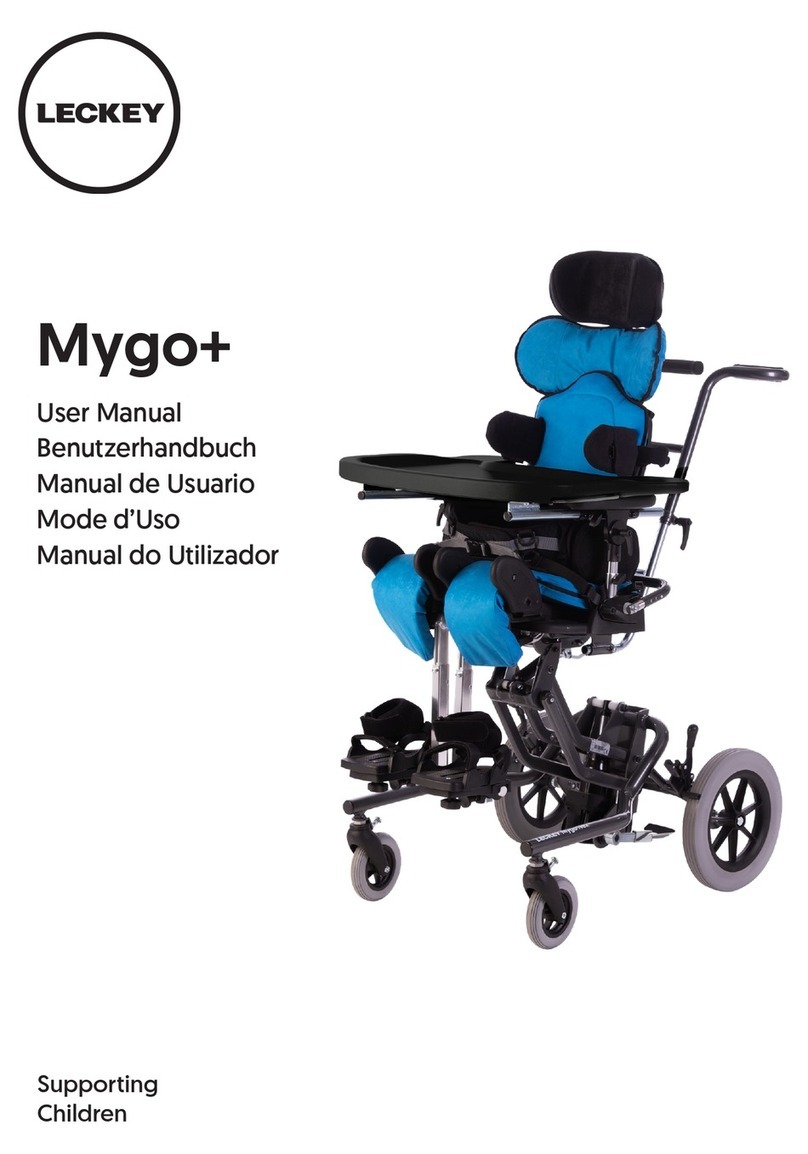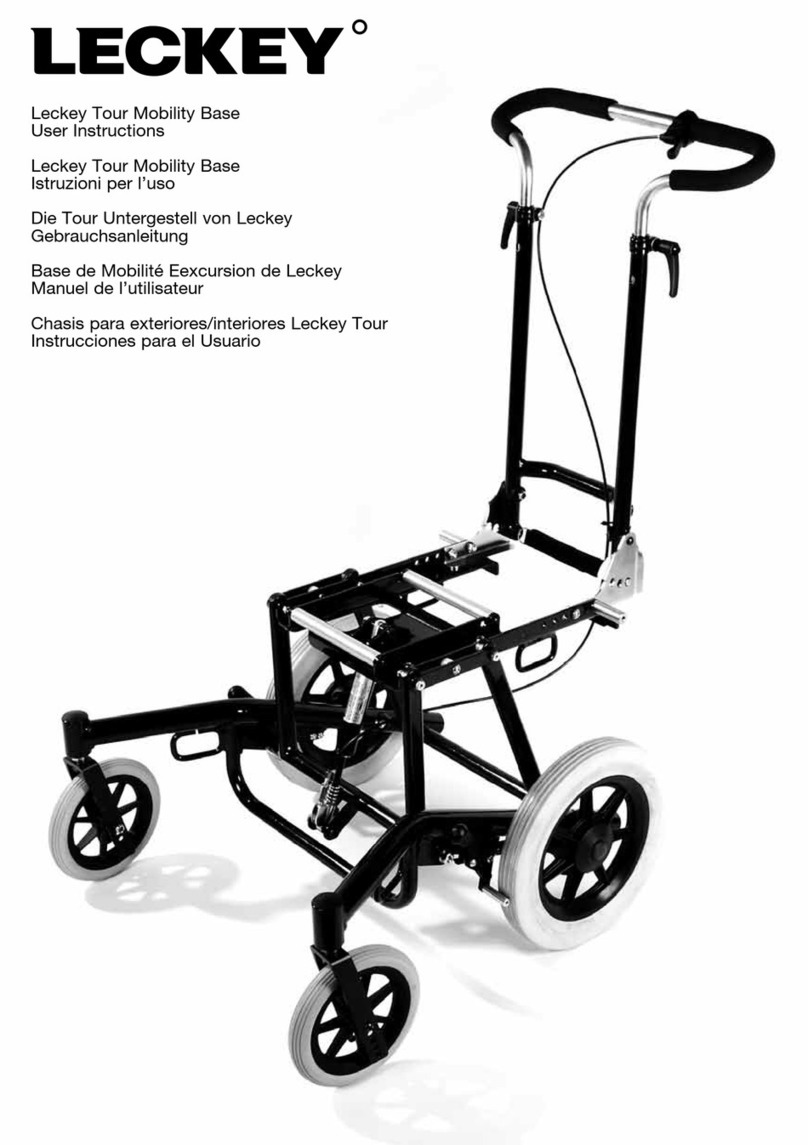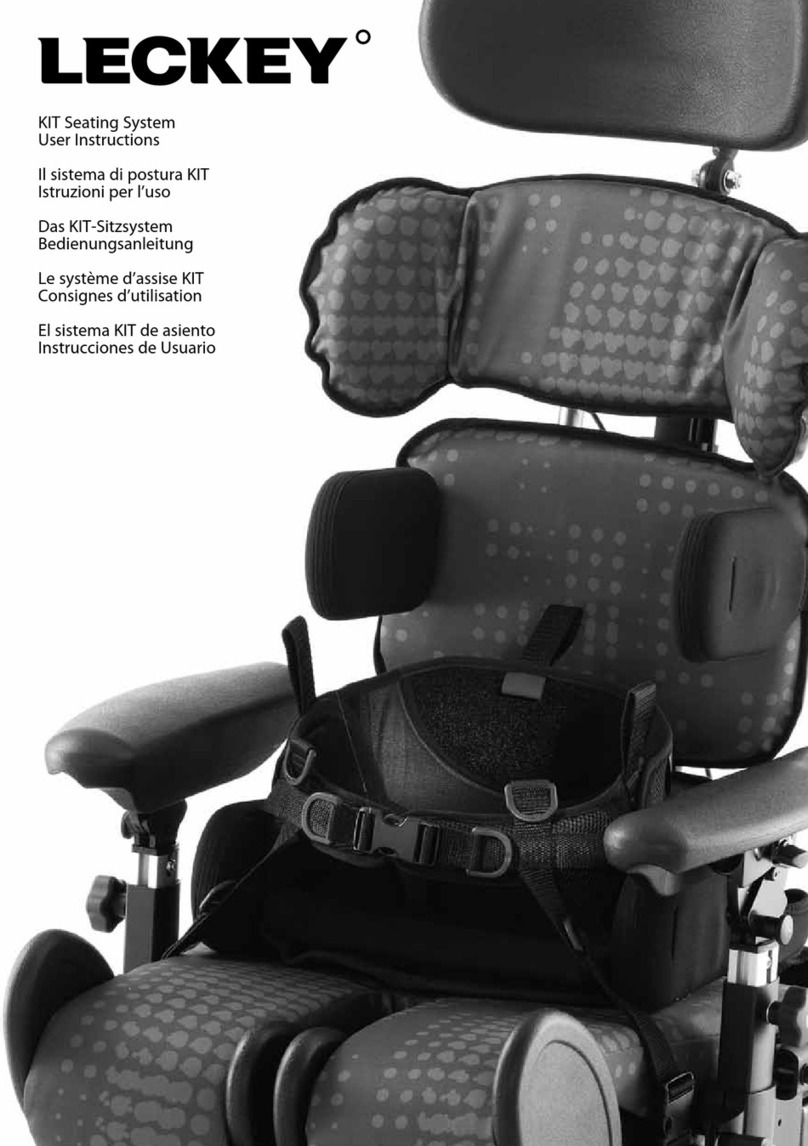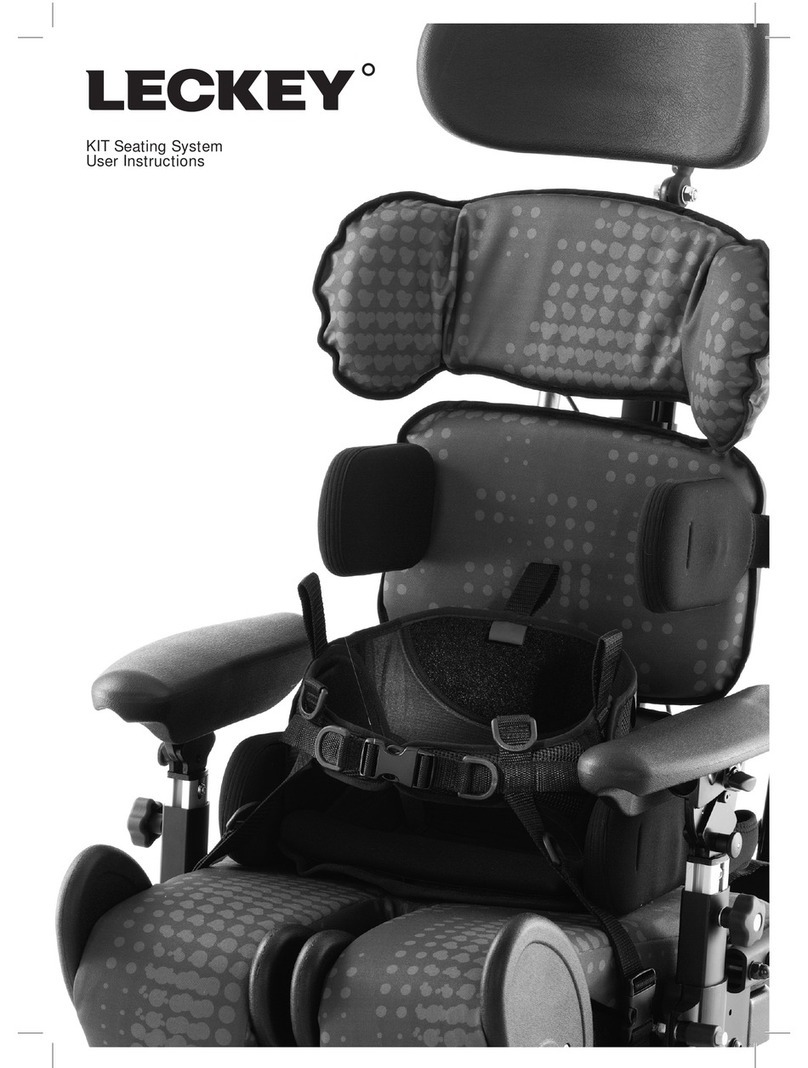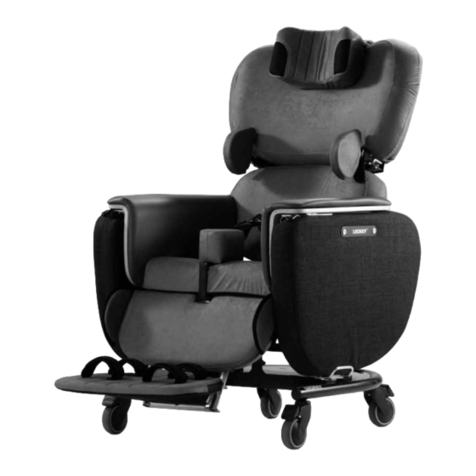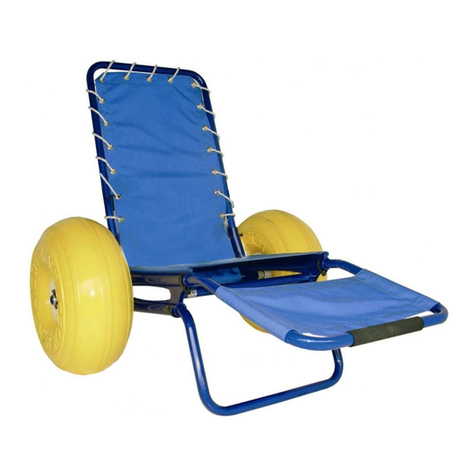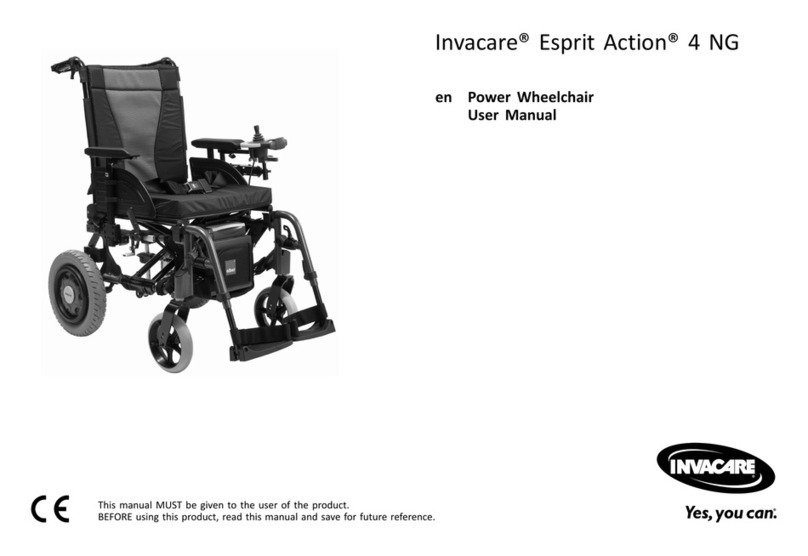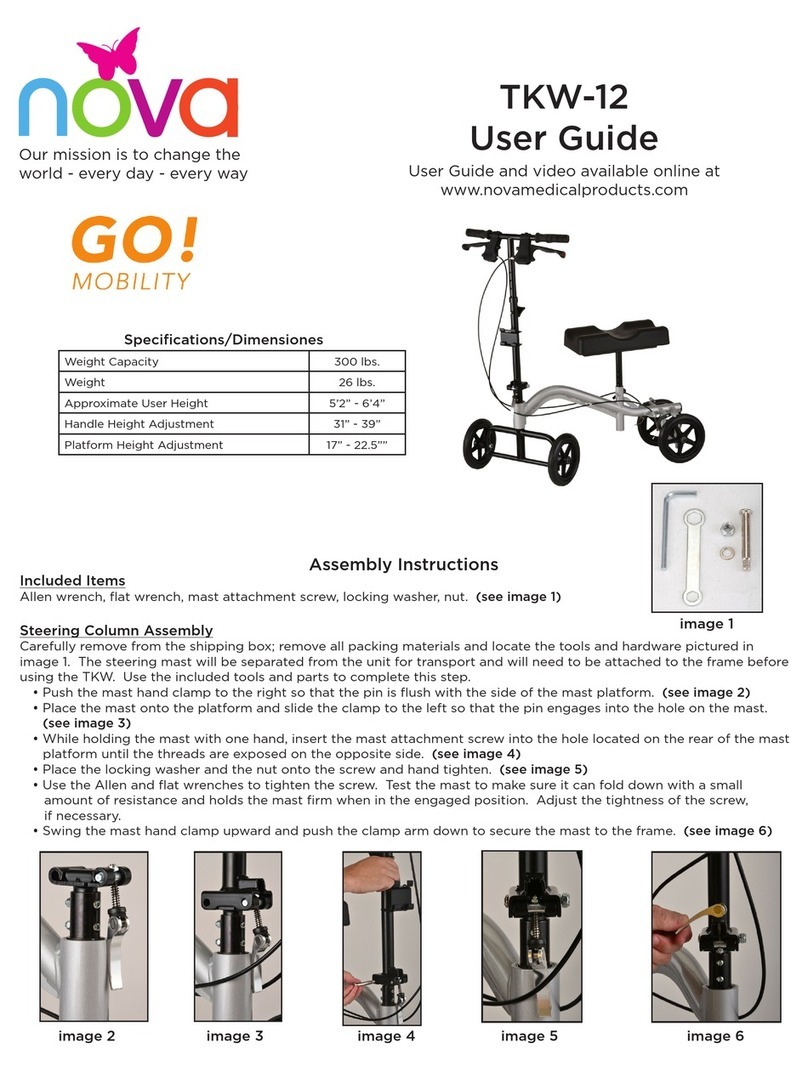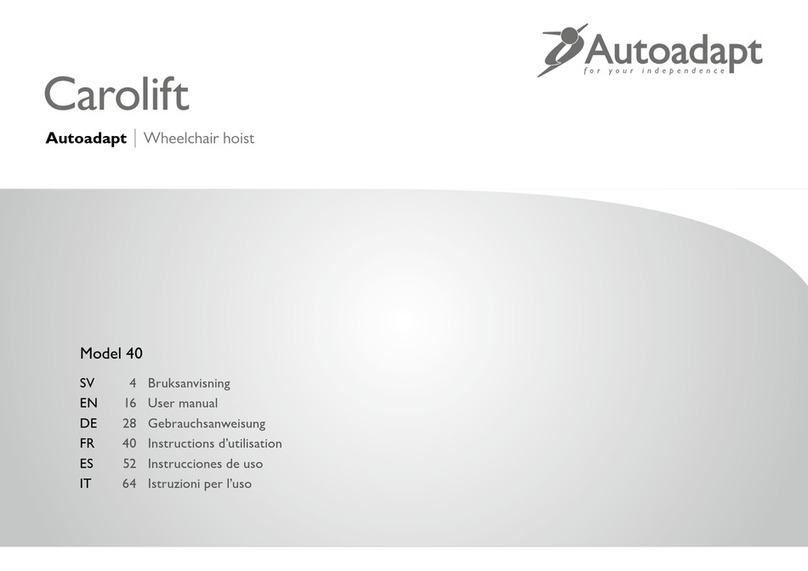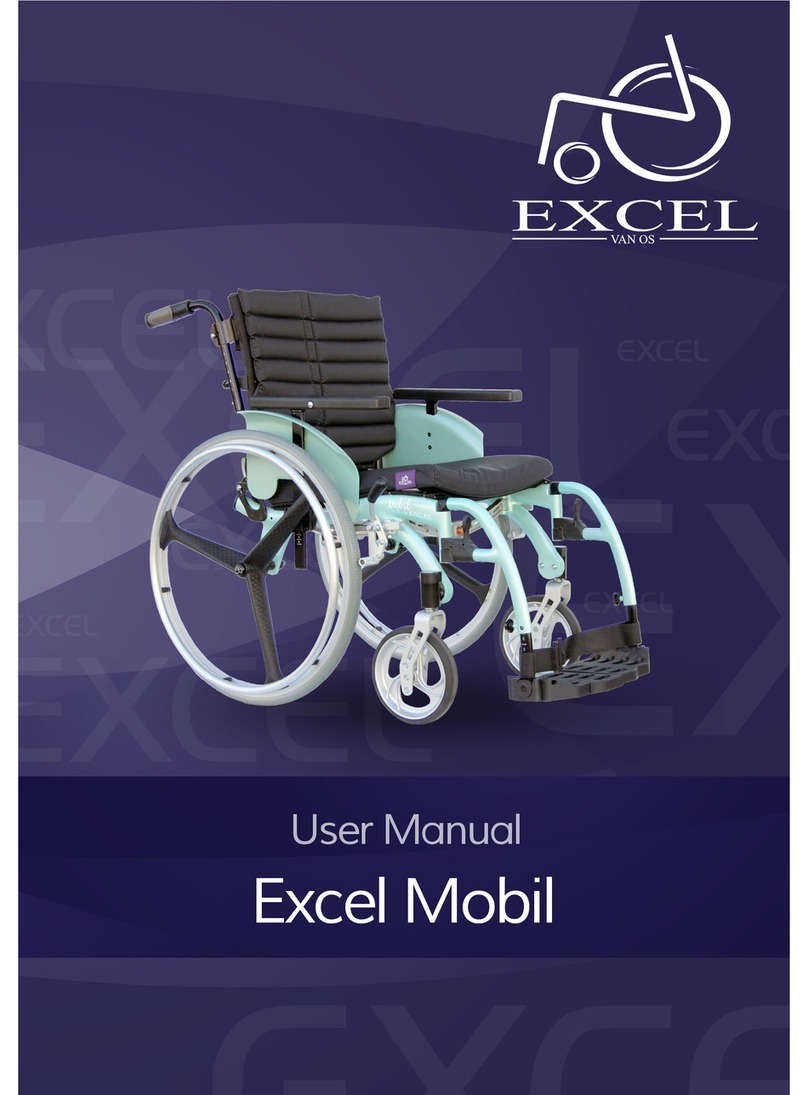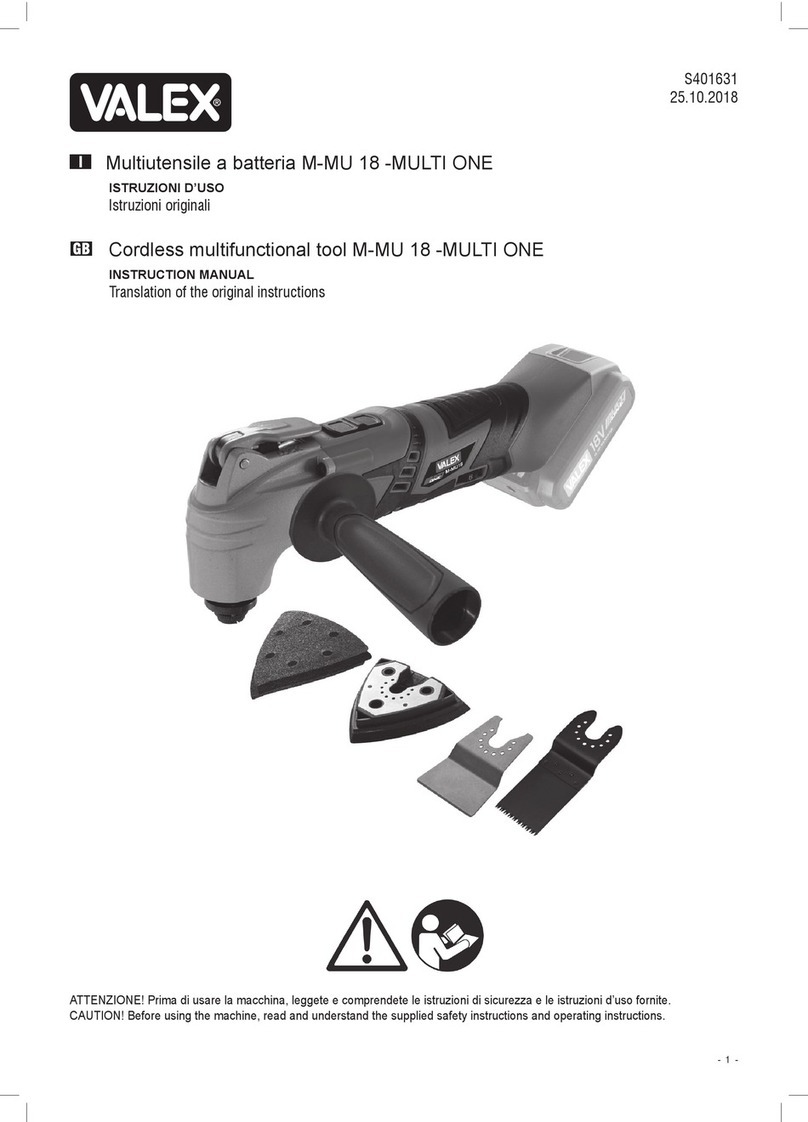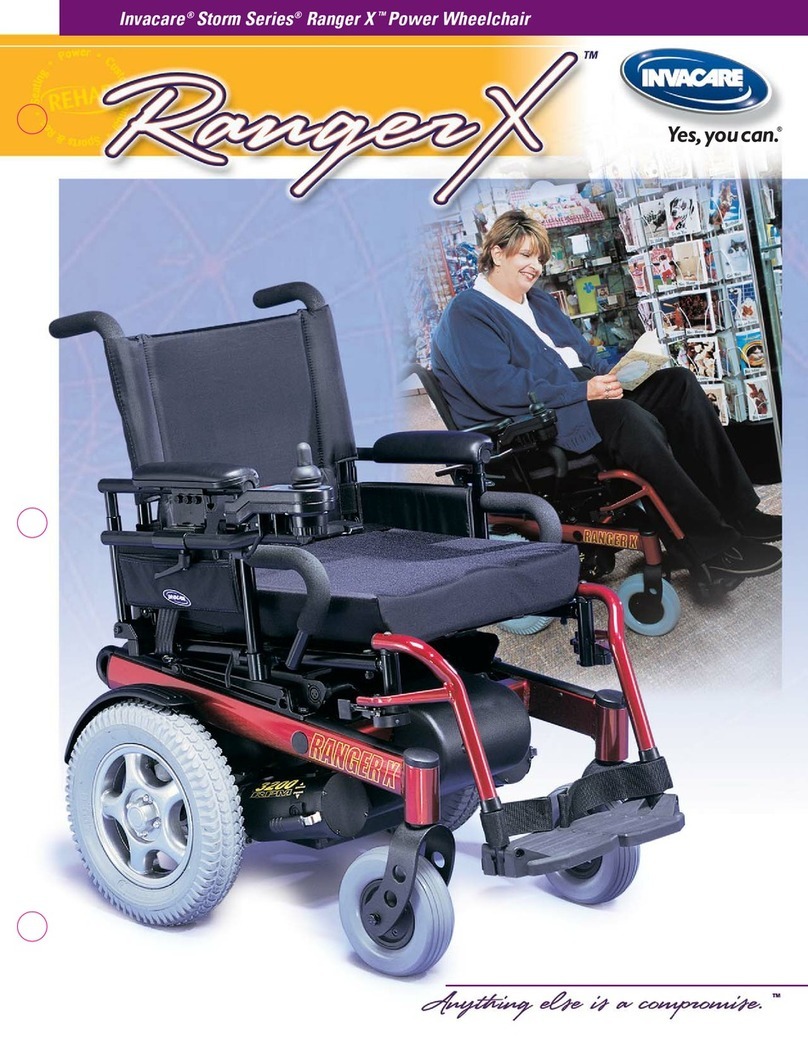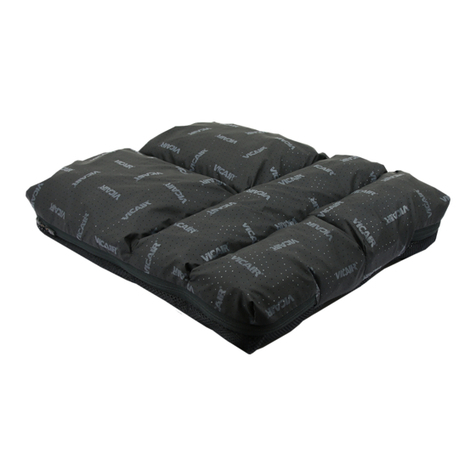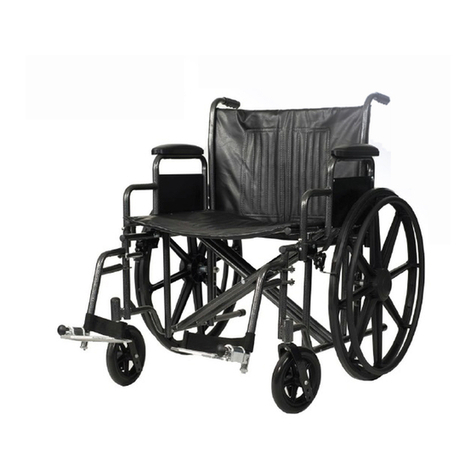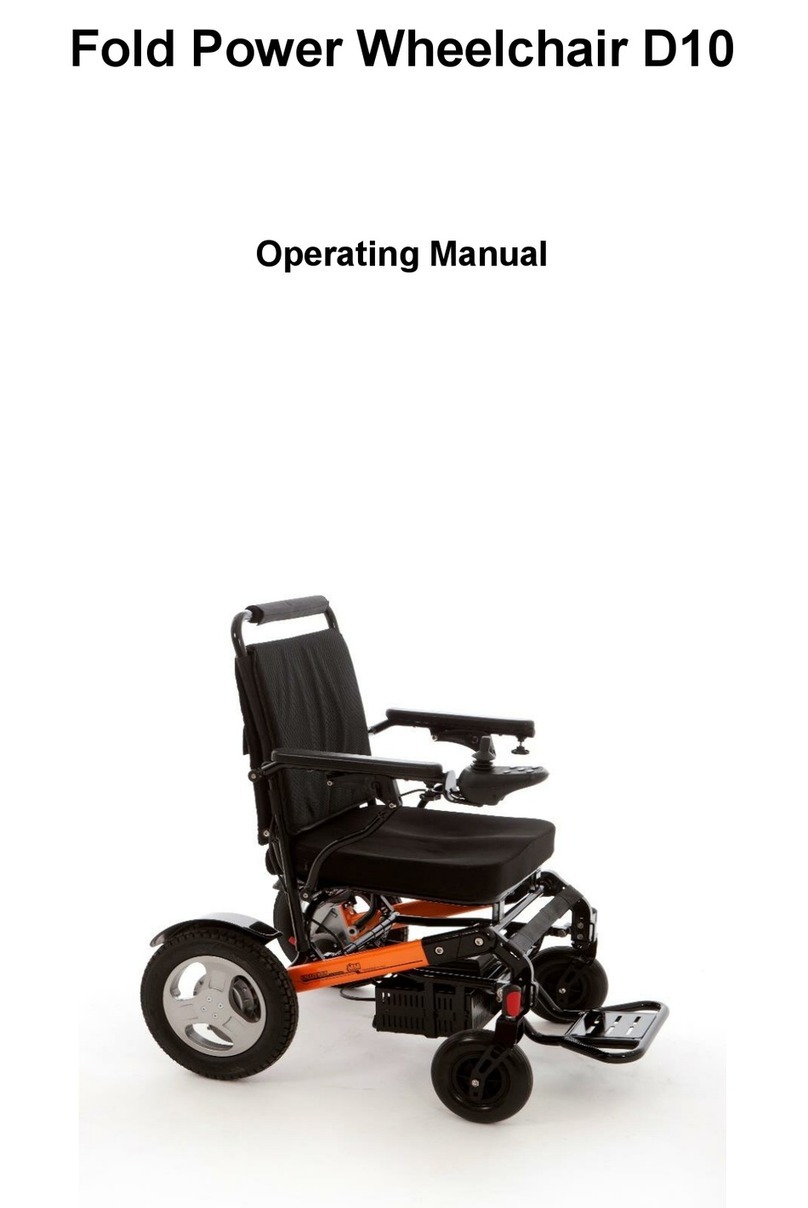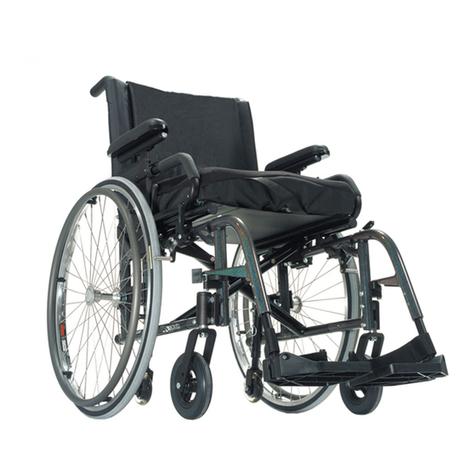6.1 Always read instructions fully before
use.
6.2 Users should not be left unattended at
any time while using Leckey equipment.
6.3 Only use Leckey approved components
with your product. Never modify the
product in any way. Failure to follow
instructions may put the user or carer
at risk and will invalidate the warranty on
the product.
6.4 If in any doubt to the continued safe
use of your product or if any parts should
fail, please cease using the product and
contact our customer services department
or local dealer as soon as possible.
6.5 Carry out all positional adjustments
and ensure that they are securely fastened
before you put the user into this product.
Some adjustments may require the use of
a tool which is provided with each product.
Keep all tools out of reach of children.
6.6 When placing the user into a seating
system, for safety and positional reasons,
always secure the Pelvic Cradle first.
6.7 When the product is stationary ensure
that all wheels are locked and facing away
from the base as this will improve product
stability. This is especially important
when the tilt in space or back recline
facility is in use.
6.8 When the seat is in use on the Hi-low
chassis we do not recommend that the
users are moved over uneven surfaces
when in the equipment. All due care
and attention should be taken when
transporting the user in and out of the seat.
6.9 Never leave the product on a sloping
surface, greater than 5 degrees. Always
remember to lock all the wheels.
6.10 Only use the push handles to steer
and move the seat from one area to
another. Never use the tray for this
purpose.
6.11 The product contains components
which could present a choking hazard to
small children. Always check that locking
knobs and bolts within the user’s reach are
tightened and secure at all times.
6.12 Leckey products comply with fire
safety regulations in accordance with
EN12182. However the product contains
plastic components and therefore should
be kept away from all direct sources of
heat including naked flames, cigarettes,
electric and gas heaters.
6.13 Do not place hot items greater than
40º centigrade on the tray.
6.14 Clean the product regularly. Do
not use abrasive cleaners. Carry out
maintenance checks on a regular basis to
ensure your product is in good working
condition.
6 Safety Information


